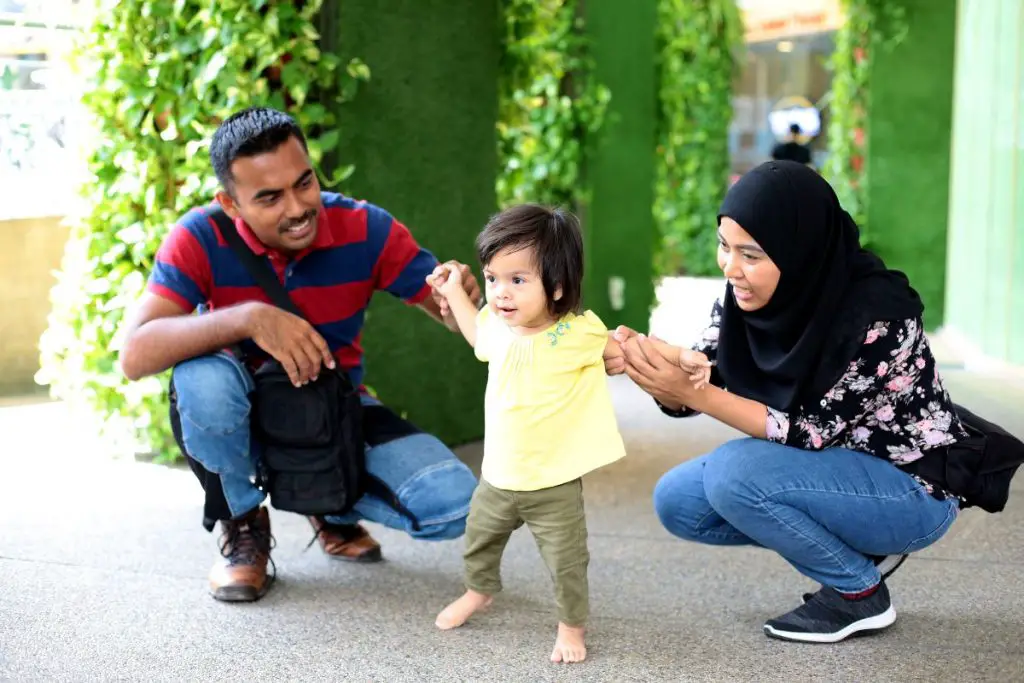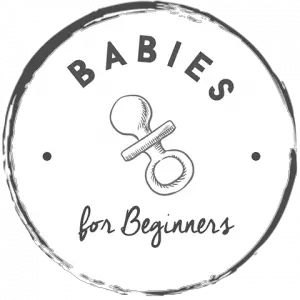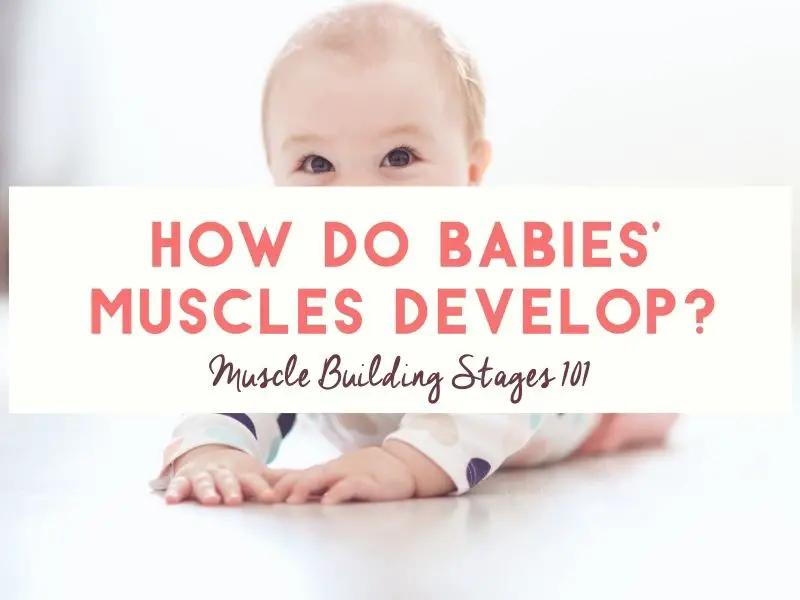From the comfort of a bouncy seat, your newborn is probably content to sit quietly and stare up at you, occasionally wiggling or waving their arms and legs. But then you look back a few months later, wondering how your cute, immobile little baby grew into the whirlwind of activity you chase after every day.
Though it seems to happen effortlessly and the satisfaction of being able to do or go where they want is unparalleled for little ones, there’s a lot of thought and muscle that goes into it.
So pull up a seat, think about babyproofing soon, and try to enjoy the show that will play out in front of you. Just remember that every baby grows and develops in their own way and on their own time, so don’t fret if a milestone comes late (or early).
Here’s the average timeline for when a baby develops their muscles and learns to put their body in motion:
1. Neck Strength
At first, your infant’s neck seems incredibly fragile and floppy, far too weak to support that enormous head of theirs! But if you place your baby on their stomach, even at just six weeks old, they’ll lift their head for a few seconds at a time.
Your baby’s neck muscles will be strengthened and their curiosity about their surroundings will be piqued by this practice.
Further, each time they lift their head, your baby learns to coordinate their head and eye movements, which allows them to see a little bit more of their environment, however blurry.

It will take your little one several months to work up the strength and coordination to lift their head while lying on their back. By the time they’re four months old, your baby will be able to prop themself up on their elbows from any position and take in everything from their mobile to the changing table.
2. Roll, Baby, Roll!
Though rolling around isn’t the most effective way to move, it’s certainly lots of fun for your baby, who has previously had to wait for you to take them places.
Most babies rock and roll from their stomach to their back between four and seven months. But this ability didn’t arrive overnight. You’ve probably noticed that when your baby is on their stomach, they lifts their head and neck and push their arms and legs away from the floor, as if they were trying to fly. This particular form of baby yoga builds up the strength they need to roll over, and eventually sit up and crawl.
These days, though, some kids don’t get as much of this type of strength training as they need. Because of concerns over sudden infant death syndrome (SIDS), many babies spend most of their time on their back, so they don’t get much opportunity to challenge their muscles by lying on their tummy and lifting up their head, arms, and legs. To help your baby become stronger, have them spend some supervised time on their tummy each day.
Encourage your baby to reach and use their muscles by placing interesting toys in front of them. They may not like it at first, but eventually, they’ll adjust to the feeling. Soon enough, your little one will be reaching for toys and rolling away.
3. Straighten Up and Sit Right
Between six and eight months is when most (but not all) babies start sitting up. Though your baby uses the same muscles and strengthening exercises to achieve both of these goals, it will take them some time to figure out how to place their legs and balance their upper body.
Before they can actually sit, though, your little acrobat will try lots of interesting ways to jockey themself into position. Most likely, they’ll lift their chest and try to push up with their arms. Give them lots of practice by placing your baby in a sitting position and allowing them to wave their arms around to achieve balance. It’s also helpful to prop baby up on arranged pillows so they can see the world from a new vantage point and feel what it’s like to be upright.
Learning to stand is a segue from crawling to walking, so you’ll be seeing lots of little fingerprints on tables as your child learns to pull themself up. You may hear lots of crying, too; that’s because once they stand up, they may not be able to get back down. Show them how to bend their knees and lower themself to the floor.
4. Doing the Crawl
Once your baby begins to conquer your house on all fours, usually between 7 and 10 months, a clean floor isn’t the only thing you’ll need to worry about. A crawling baby is a confident and curious baby, ready to upend laundry baskets and tear apart kitchen cabinets, so stock up on those baby locks!
Fortunately, your squirmer will give you advance notice. Babies who are getting ready to crawl often crouch on all fours and rock back and forth, or push with their hands and fall back with a bump. This helps them get a sense of how to establish balance for when they actually do crawl.
Crawling styles are as varied as babies themselves.
Kids may slither across the room on their stomachs, propel themselves across the room with straight arms and legs, or even go backward. Most little ones eventually do learn to coordinate digging in with their knees and pushing off with their hands to effectively get where they’re going.
Crawling is about more than just moving from one toy to another. As your child crawls, they learn how to navigate your house, judge distances, and practice their memory skills so they can go back to where they came from, preparing them for life as a big kid.

5. Walk This Way
Between 12 and 18 months, your baby will officially become a toddler, moving from place to place on their own two feet, usually as fast as they can.
“Cruising” is usually the first step in walking, which is taking steps while holding onto a piece of furniture.
When your baby’s mastered placing one foot in front of the other while maintaining balance, they’ll start to take a few small steps on their own. Expect those first steps to be pretty awkward and ungraceful. Instead of quick, purposeful strides, their gait will look more like a wide-legged lurch.
There will be plenty of falls along the way, but your child will probably not hurt themselves, so don’t fuss too much and distract them or confuse them.
Walking doesn’t just change how your child gets from place to place; it changes their whole outlook. Some children find the ability to toddle away from Mom and Dad as scary as it is exhilarating, so a new walker may be clingier than usual. Some kids may get frustrated and cry more often because they can’t move around as quickly as their older siblings.
Don’t be alarmed if your chatty little one suddenly stops talking when they learn how to walk; they’re concentrating so hard on mastering this new skill that they might abandon others for a while.

